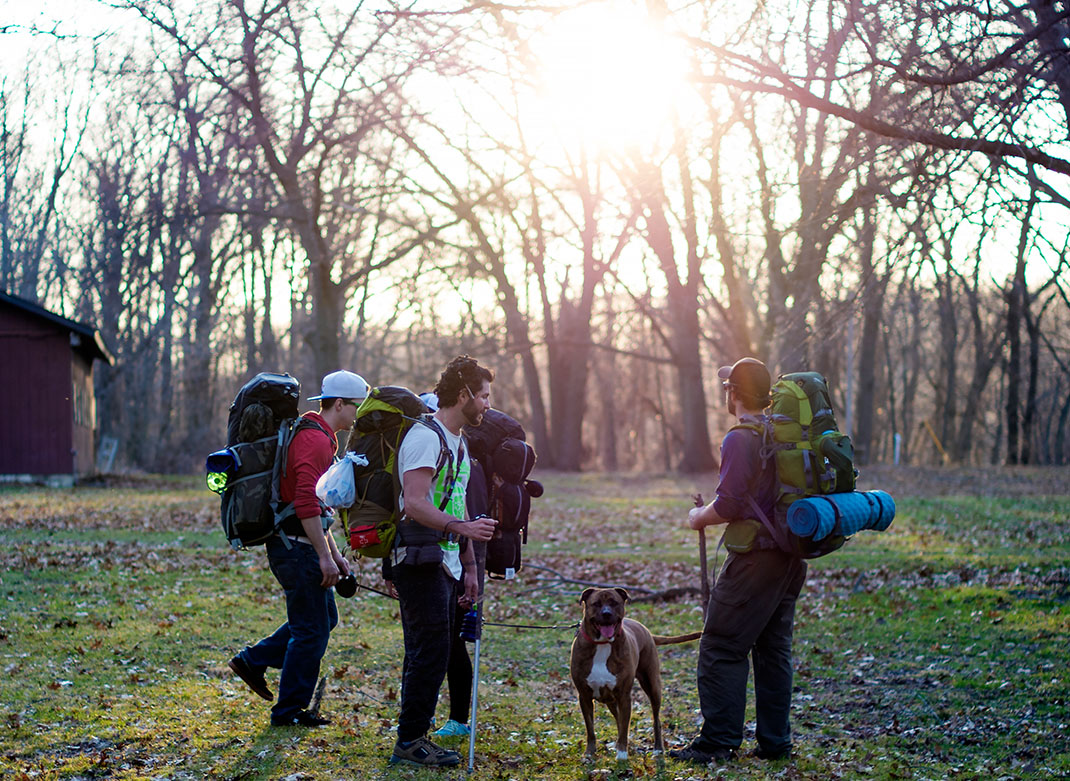How to prevent and treat foot blisters
Outdoor Activities | March 28, 2024
SAIL
September 19, 2016

A traveller stuck on their back with an overloaded backpack on the floor of a busy airport is a hard thing to watch.
Hauling unnecessary weight while you’re on the road can really tire you out, especially in hot and humid places. As far as what stays and goes, it all comes down to your comfort levels and how much laundry you’re prepared to do or pay for.
Increased charges for overweight luggage are encouraging travellers to mind their weight limits while flying. Carry on guidelines vary from one airline to the next. Whether you can get your belongings down to that size is up to you. A compression sack will help make that big pile of clothes turn into a smaller pile. Depending on your airline, however, it can also come down to how well your attendant slept the night before.
When you’re wondering about what to bring think about the climates you’ll encounter. If it’s a tropical country, chances are you can keep it to a relatively small pile compared to a winter vacation in Sweden. On a beach in Thailand, shorts, T- shirts and a bathing suit is what you’ll be wearing most of the time. Add a fleece and light pants for rainy days and late night campfires on the beach and you’re good to go.
There are many different ways to carry all your gear besides a backpack. Look at it as packing it on your back not necessarily backpacking. Why carry a bag that was made to hike the West Coast Trail when all you’ll be doing is catching taxis in Prague? If your style of travel is closer to walks from bus depots, airports, train stations and taxis to a hostel or hotel, there are other ways to haul your stuff.
Duffel bags have come a long way from the old army surplus duffels that looked likestuffed green sausages. Tough and durable, they’re great for weekend trips closer to home or journeys to places like the developing world that are hard on gear. Most duffels have padded shoulder straps for long walks and handles so you can carry them like a piece of luggage. They also zip open which makes for easier access and locks to keep things more secure.
Travel packs, on the other hand, resemble a soft shell suitcase because they zip open and have large compartments with side pockets. Less bulky and sleeker than backpacks, they’re more urban friendly. Travel packs are a great option for a more professional look on the road or at a long weekend conference in Whistler. They have handles, basic shoulder straps and a hip belt that zip away out of sight so it looks like a suitcase. Some offer substantial shoulder harnesses, but for most the harness is for convenience rather than extended treks.
If trekking or camping is part of your vacation plans then you might as well reap the benefits of a full out backpack. Beefy hip belts and padded shoulder straps offer support to carry heavy loads for extended periods. Backcountry packs also have loops and stash pockets that come in handy on the trail. To avoid getting straps caught on conveyor belts at the airport, there are bags for your backpack that will prevent that from happening.
If you’re into pack and roll, you don’t even have to lug it on your back. In recent years, wheeled luggage has stepped up the game as far as durability so they’ve become more of an option for independent travellers. Tough wheels, materials and handles can hold up to old city cobblestone streets or a dirt road in Ecuador. If you feel the need to get it on your back, some have shoulder straps and a hip belt that hide away as well as an integrated daypack.
Wherever you’re headed, you’ll be spending a lot of time with your travel gear. It’s like your home away from home. The better it fits your style, the better you’ll get along. Happy Trails!